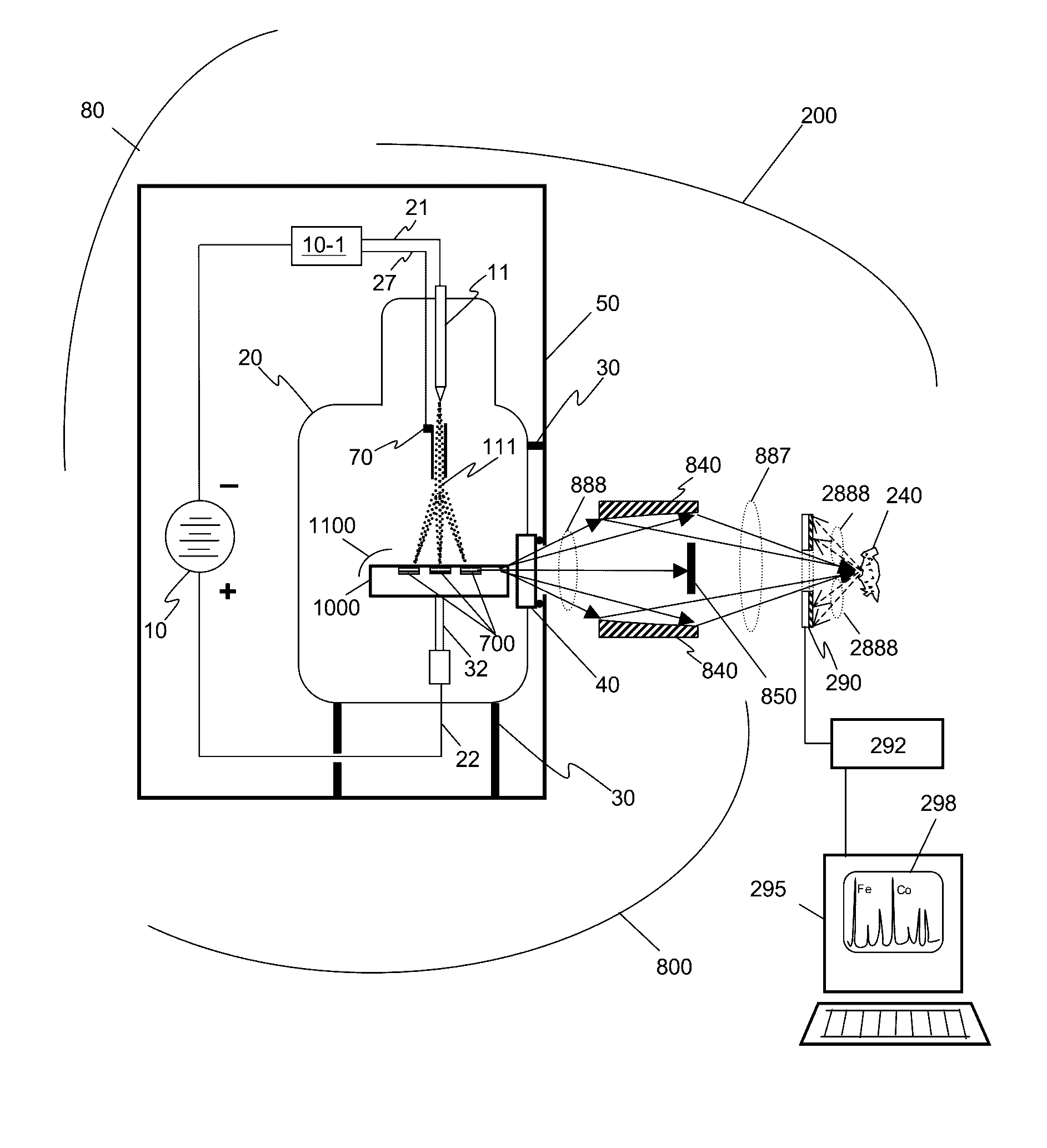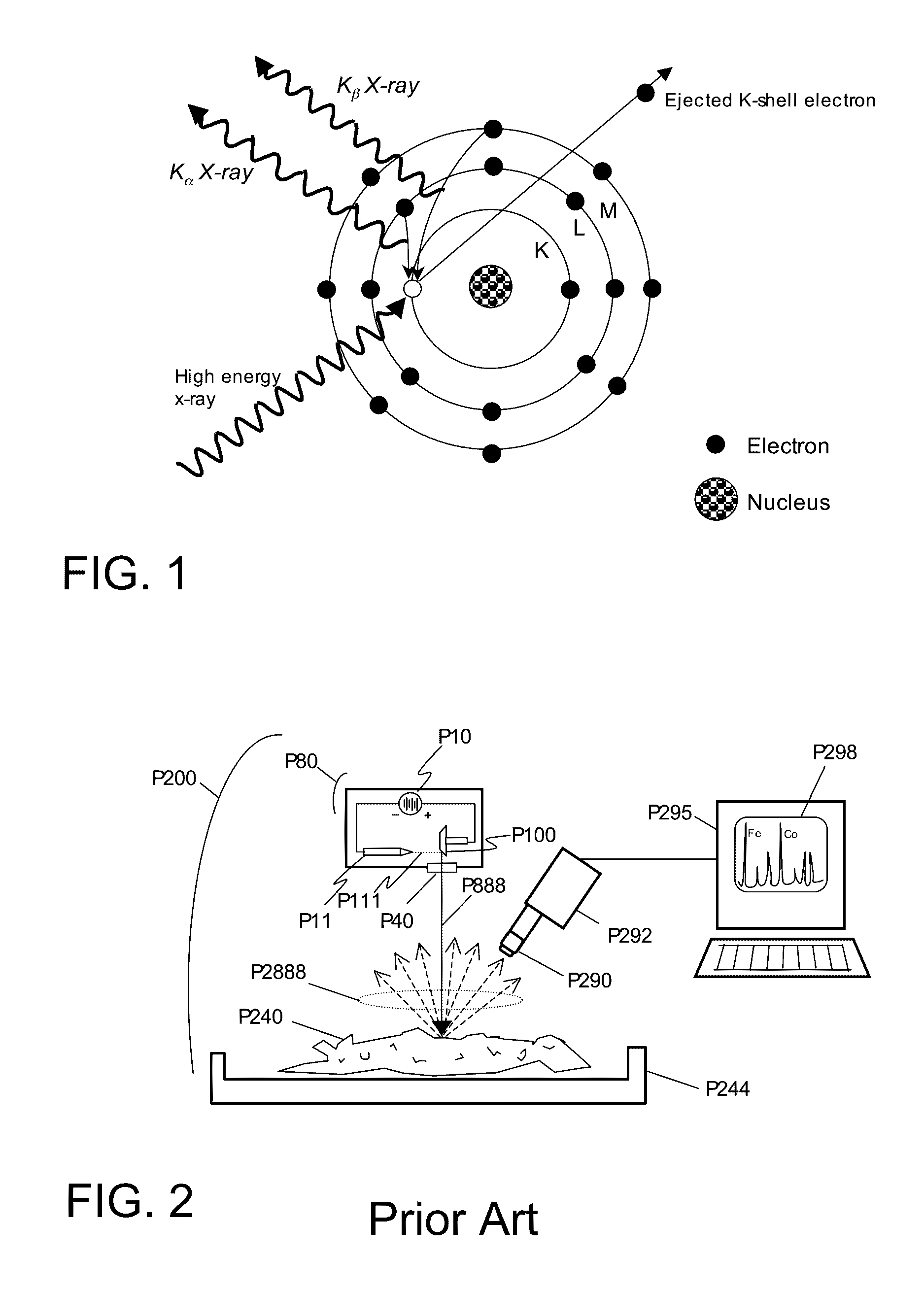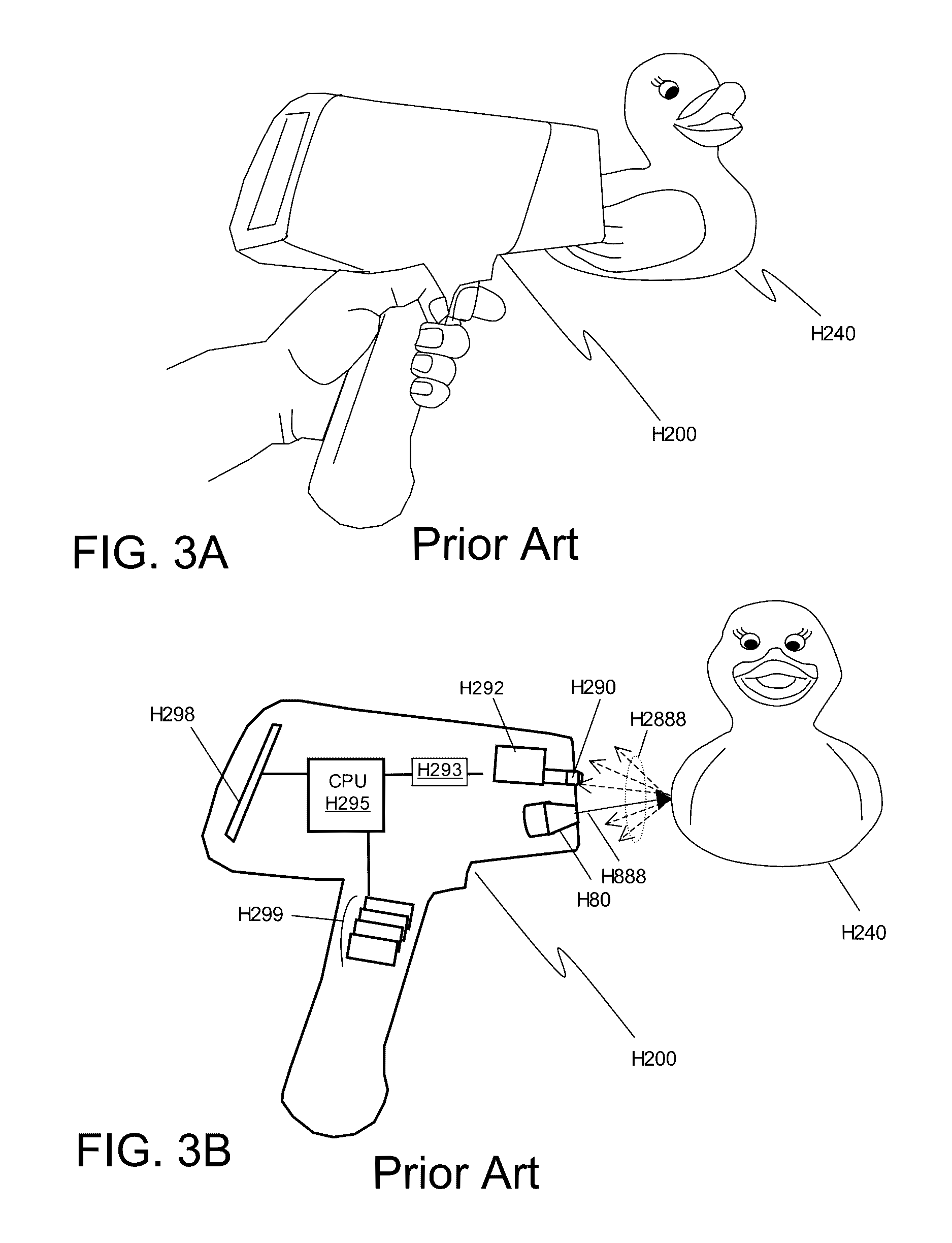X-ray fluorescence system with high flux and high flux density
a fluorescence system and flux density technology, applied in the field of micro-xray fluorescence systems, can solve the problems of insufficient conventional x-ray sources using electron bombardment, difficult design and construction of illuminators for x-ray applications, and high cost of operation, and achieves high thermal conductivity, high electron density, and efficient heat drawing out of x-ray generating materials.
- Summary
- Abstract
- Description
- Claims
- Application Information
AI Technical Summary
Benefits of technology
Problems solved by technology
Method used
Image
Examples
Embodiment Construction
1. A Basic Embodiment of the Invention
[0091]FIG. 7 illustrates an embodiment of an x-ray fluorescence system 200 comprising an illumination system according to the invention. The fluorescence system 200 comprises an illumination system 800 which comprises an x-ray source 80 and an x-ray optical train 840. The fluorescence system 200 additionally comprises a detector 290 with analysis electronics 295. The source 80 comprises a vacuum environment (typically 10−6 torr or better) commonly maintained by a sealed vacuum chamber 20 or active pumping, and manufactured with sealed electrical leads 21 and 22 that pass from the negative and positive terminals of a high voltage source 10 outside the tube to the various elements inside the vacuum chamber 20. The source 80 will typically comprise mounts 30 which secure the vacuum chamber 20 in a housing 50, and the housing 50 may additionally comprise shielding material, such as lead, to prevent x-rays from being radiated by the source 80 in unwa...
PUM
| Property | Measurement | Unit |
|---|---|---|
| thickness | aaaaa | aaaaa |
| energy bandwidth | aaaaa | aaaaa |
| refractive index | aaaaa | aaaaa |
Abstract
Description
Claims
Application Information
 Login to View More
Login to View More - R&D
- Intellectual Property
- Life Sciences
- Materials
- Tech Scout
- Unparalleled Data Quality
- Higher Quality Content
- 60% Fewer Hallucinations
Browse by: Latest US Patents, China's latest patents, Technical Efficacy Thesaurus, Application Domain, Technology Topic, Popular Technical Reports.
© 2025 PatSnap. All rights reserved.Legal|Privacy policy|Modern Slavery Act Transparency Statement|Sitemap|About US| Contact US: help@patsnap.com



